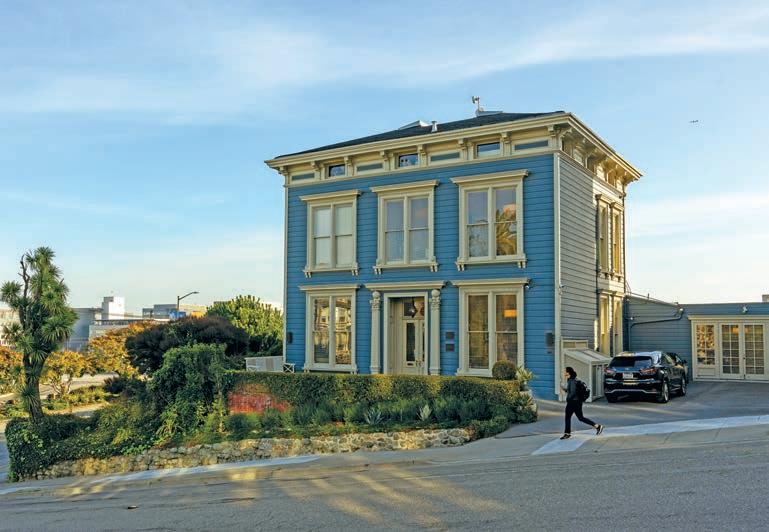
2 minute read
Dogpatch, Potrero Hill Beset with Unmaintained Right-of-Ways, Known as “Unaccepted Streets”
BY JESSICA ZIMMER
Residents of southeastern neighborhoods are frustrated by chronic municipal neglect of unaccepted streets, public right-of-ways also known as “dirt” or “paper” roads. These pathways may be narrow, have rough surfaces, and lack sidewalks or curbs.
Advertisement
Unaccepted streets were created in the 19th Century when San Francisco was first occupied by EuropeanAmericans. Property owners would submit building plans to the City, some of which were unrealistic. Streets that existed on paper were never built, due to an impeding hill or waterway. In some cases, roads were developed, but not to code. This collection of lands defaulted into becoming public right-of-ways.
In 1997, the City audited and graded about 30,000 streets. Roughly 2,000 were left behind, unaccepted, because they didn’t meet municipal standards, such as being 26 feet wide curb to curb. San Francisco Public Works took jurisdiction over these right-of-ways.
Unaccepted streets take a wide range of forms, including dead ends following an accepted street and rocky hillsides. Under state and local law, a property owner adjacent to an unaccepted street is responsible for maintaining it to the center of the right of way, according to Rachel Gordon, San Francisco Public
Works spokesperson. The City is prohibited from using general funds or state gas tax money to cover this obligation. Public Works doesn’t monitor upkeep efforts on unaccepted streets.
“We only are aware of specific instances in which maintenance is not done and we receive a service request complaint about it. Then we address those concerns on a case-by-case basis,” said Gordon.
Unaccepted streets may be beset with potholes, cracks, and trash. Unlimited parking is available on some, a boon or blight, depending on one’s perspective.
The City’s long list of unaccepted streets includes a segment of Bryant Street near Bayside Village, from roughly street addresses 367 to 0 and a portion of Delancey Street near the Bryant Street overpass, about at street address 0, as indicated in a 2023 Public Works map.
According to Katherine Doumani, Dogpatch Neighborhood Association (DNA) president, the lower portion of 20th Street at roughly the 800 block is the community’s most problematic unaccepted street. It’s well traveled by bicyclists and pedestrians, but isn’t adequately paved, with both street sides used for parking.
“The next would probably be Penn-
Dogpatch Family’s Entire Belongings
from U-Haul
BY REBEKAH MOAN
At the end of March, Deanna Borbon and René Felbermayr packed a UHaul to move to Los Angeles with their two small children and left it parked on Texas Street between 19th and 20th streets. In the early hours the next night, thieves stole the vehicle, which contained all the family’s belongings, as well as the Volkswagen GTI that was attached.
Borbon was already in L.A. with the children, ages four and three months, staying at her mother’s house. Felbermayr notified the San Francisco Police Department (SFPD), which advised him to stick around for a few days in case the U-Haul reappeared. He stayed with his former business partners – Tamara Hicks and David Jablons, at Daily Driver – who lived three houses down.
After not hearing anything for a few days Felbermayr rejoined his family in L.A. Within 48 hours the police notified him that they’d found his car and he needed to get it out of police holding.










